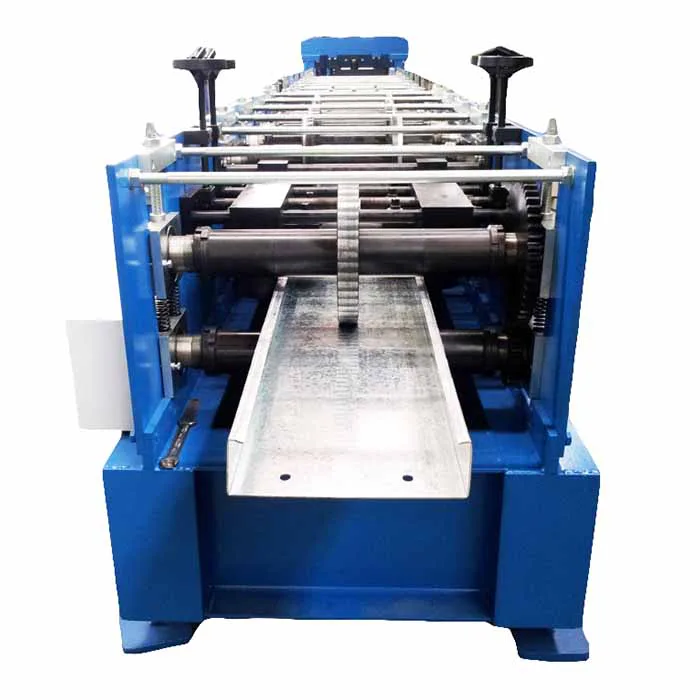
Precision Engineering- Understanding the Mechanics of Metal Plate Rolling
- By:Metmac
- 2024-05-08
- 225
Precision engineering plays a pivotal role in the metalworking industry, and metal plate rolling is a fundamental process that shapes metal sheets into desired curvatures.
delves into the intricacies of this process, offering comprehensive insights into its techniques, principles, and applications.
Principles of Plate Rolling
Metal plate rolling involves bending a flat metal sheet around a series of rollers, gradually forming it into the desired curvature. The process relies on plastic deformation, where the metal is deformed beyond its elastic limit and undergoes permanent changes in shape. The rollers apply a combination of compressive and tensile forces, creating a curvature that ranges from gentle bends to tight coils.
Factors Influencing Plate Rolling
Achieving precise plate rolling outcomes depends on several factors:
Metal Properties: The thickness, strength, and ductility of the metal sheet significantly impact the rolling process and the resulting curvature.
Roller Geometry: The diameter, profile, and arrangement of the rollers determine the curvature and shape of the rolled plate.
Rolling Speed and Pressure: The speed and pressure applied during rolling influence the rate of deformation and the precision of the curvature.
Lubricants: Proper lubrication reduces friction between the rollers and the metal sheet, ensuring smooth rolling and minimizing surface damage.
Techniques of Plate Rolling
Precision engineering employs various plate rolling techniques:
Three-Roller Rolling: This technique uses three rollers arranged in a triangle, producing cylindrical shapes with uniform curvature.
Four-Roller Rolling: Four rollers are arranged in a rectangular configuration, creating complex shapes such as cones and elliptical sections.
Pinch Rolling: Two rollers press against a metal sheet, forming small bends or curves.
Progressive Rolling: The metal sheet passes through multiple sets of rollers with increasing curvature, gradually shaping it into the desired form.
Applications of Precision Plate Rolling
Precision metal plate rolling finds applications in numerous industries:
Shipbuilding: Rolling plates for hulls, decks, and masts.
Construction: Creating curved structural elements for bridges, buildings, and architectural features.
Automotive: Fabricating body panels, bumpers, and exhaust systems.
Aerospace: Forming aircraft components and engine parts.
Energy: Rolling plates for wind turbine blades and solar panels.
Conclusion
provides a comprehensive understanding of the principles, factors, techniques, and applications of this essential metalworking process. By mastering the intricacies of plate rolling, engineers and fabricators can achieve precise and accurate results, creating complex shapes with high-quality surface finishes that meet the demands of various industries.
-
Metal Sheet Forming Machine: The Engine of Modern Fabrication and the METMAC Standard
2025/12/30 -
Laser Cutting Machine for Steel Plate: Precision Redefined for Modern Fabrication
2025/12/30 -
Metal Curving Machine: Shaping Strength with Precision and the Art of METMAC Engineering
2025/12/30 -
Shear Metal Cutting Machine: Precision, Power, and the METMAC Standard
2025/12/30
-
Advanced Sheet Metal Rolling, Laser Cutting, and Folding Machines for Precision Fabrication
2025/10/31 -
High-Performance Sheet Metal Bending and Cutting Machines for Modern Fabrication
2025/10/31 -
High-Quality Sheet Metal Equipment for Sale: Efficient Solutions for Modern Manufacturing
2025/10/31 -
High-Performance Sheet Metal Equipment for Sale: Forming and Shearing Solutions for Modern Fabrication
2025/10/22
-
A Guide to the Latest Innovations in Sheet Metal Folding Machines
2024/11/29 -
Key Features to Consider When Investing in a Sheet Metal Folding Machine
2024/11/28 -
Enhancing Precision with Advanced Sheet Metal Folding Machines
2024/11/27 -
How to Choose the Right Sheet Metal Folding Machine for Your Workshop
2024/11/26







